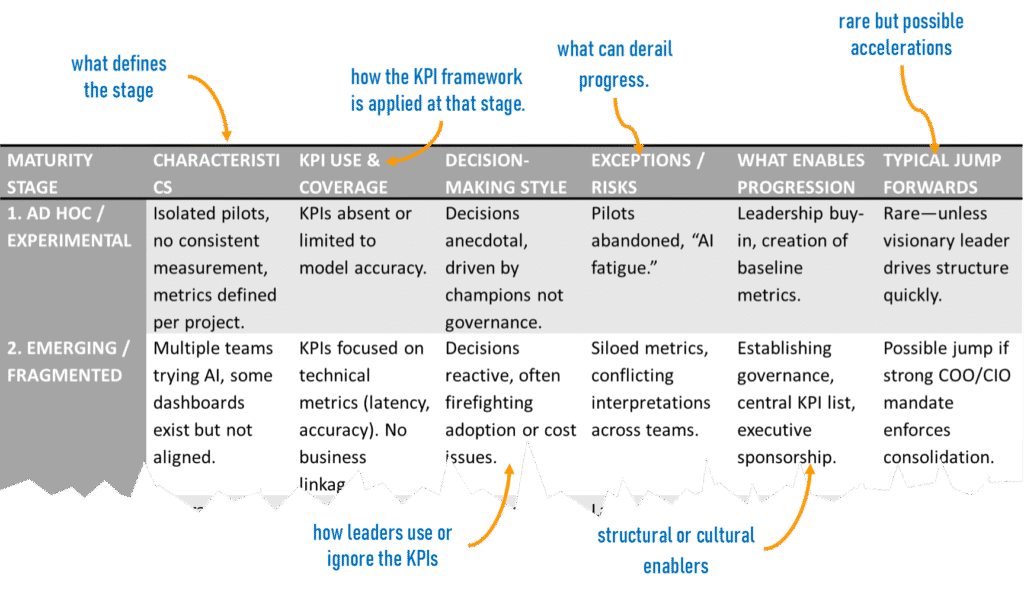KPI Framework for AI Implementation Success: The Hurricane & Spitfire Story.
Have you heard of the legendary Spitfire, the celebrated icon of the Royal Air Force (RAF) during WW II? The Hurricane, today is the much lesser known aircraft. However, it was actually the workhorse and the true engine of victory, while the Spitfire captured all the glory. The Hurricane, scored over 50% of the kills. This contrast offers a powerful lesson for today’s AI initiatives. AI is the glamorous Spitfire of digital transformation, attracting executives and media attention with its promise of innovation. Yet, like the Hurricane, the essential KPI framework is the overlooked, foundational workhorse that ensures success. A staggering 80% of AI projects fail to meet their goals, a direct result of the absence of a rigorous KPI framework for measuring and managing success beyond the hype.

The Unsung Hero: The KPI Framework’s Contribution
A robust and comprehensive KPI framework is the essential foundation for transforming AI’s potential into tangible, sustainable value. Instead of merely tracking technical metrics, such a framework would connect AI initiatives directly to business outcomes, providing transparency, accountability, and a clear path for continuous improvement. The framework then, becomes the engine that drives results by ensuring AI projects deliver measurable, strategic value.
Organizations that build a KPI framework for AI implementation success, from the start, significantly improve their chances of achieving meaningful outcomes. For instance,
- Walmart integrated AI-driven predictive analytics into its KPI tracking system. This move increased forecast accuracy by 30%, reduced stockouts by 20%, and lowered excess inventory by 15%, resulting in substantial operational savings and better customer experiences.
- Similarly, Netflix uses AI-powered recommendation engines integrated with KPIs that measure user engagement, content relevance, and churn rates. This approach has boosted user retention and viewing time, driving steady subscriber growth.
- ABO Wind, the Germany based renewable energy firm, adopted a KPI framework focused on streamlining proposal submissions and process tracking through AI. They improved operational efficiency by 80%, freeing up resources for strategic growth.
These successes show that a KPI framework isn’t just a reporting tool; it’s a strategic guide that ensures AI efforts are aligned with business goals rather than treated as isolated technical experiments.
Essential Ingredients for Success: The Foundational Factors
Successful AI implementation is not a one-off project but a continuous effort that relies on a combination of interconnected factors. The KPI framework, is the glue that holds these factors together, providing a system for measurement and management across the entire AI ecosystem.
The critical success factors for sustainable AI impact include:
- Leadership and Governance: A framework ensures executive sponsorship and resource allocation are tied to measurable outcomes.
- Strategic Alignment: KPIs directly connect AI initiatives to broader business goals, preventing misdirected efforts.
- Data Quality and Accessibility: The framework highlights the need for and measures the health of the data essential for reliable AI models.
- Cross-functional Collaboration: KPIs can track the success of cross-departmental efforts, breaking down silos and promoting integrated solutions.
- Talent and Skills Development: The framework can help measure the effectiveness of training and talent initiatives necessary to manage and optimize AI systems.
- Change Management and Culture: A KPI framework provides a way to track the adoption and cultural shifts required for AI to be accepted and used effectively across the organization.
- Robust KPI Framework: This factor is foundational, providing the very mechanism for measuring progress and holding the other factors accountable.
By embedding the KPI framework within these success factors, organizations can ensure that their AI efforts are supported by the necessary infrastructure, skills, and strategic intent to move beyond pilot projects.
The Roadmap to Maturity: Scaling with KPIs
The ultimate goal for any enterprise is to move from isolated AI experiments to a system where AI is a core driver of business value. The combination of an AI maturity roadmap and a KPI framework (as created by 3nayan) can become potent. The former would provide a strategic guide for this journey, and the latter would provide the metrics to track progress along that roadmap. Think of the KPI framework as the GPS for your AI journey. It provides a way to assess your organization’s current capabilities across strategy, data, technology, and culture, revealing strengths and gaps.

… and to Wrap up
Just as the Hurricane was the dependable workhorse that won the war, a robust KPI framework must be the true engine of your AI implementation success. It is less glamorous than the AI models themselves, but it is the non-negotiable foundation that moves a project from a flashy experiment to a strategic asset. Leaders who recognize this and invest in a rigorous, comprehensive KPI framework will be the ones who truly harness AI’s promise and deliver lasting, measurable value.